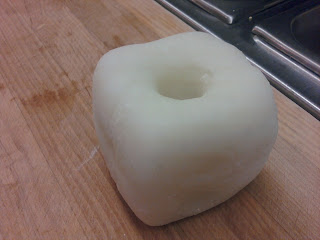Pre-show
It is often difficult to write an interesting and informative blog post on a topic that one knows well. It is often even harder to produce a quality post when the subject that one is writing about is a new topic of interest. I should know, because I am just a baby in the field of magic and the occult. While I have for many years skimmed the surface of magical literature and practices, I had not set upon studying the occult to any great degree until about two years ago. Because I am a novice, I often find myself creating posts for my blog that contain a great deal of personal experience rather than strict information. Personally, I only rarely find another person’s blogged experiences to be of value to me. It happens, but not very often. I am indeed an information kind of guy in the material I prefer. As such, I have recently been trying to steer myself away from reporting personal experiences and concentrating on delivering more informative type posts. I don’t think I have succeeded in the transformation of my blog quite yet, but it is the direction I want to take. That being said, magic is not just information. Magic is both information and experience. Without the experience one can only hope to be an armchair magician at best and a scholar at worst (just a little friendly stab at the academic community). So, because experience is important and because I want to record the event for posterity, I will once again succumb to relaying for you an experience I had recently.
The Main Event
A few nights back as I was walking past our spare bedroom I saw someone standing in the room near the laundry baskets that were resting on the floor. I just assumed it was my daughter putting away her clean clothes (her bedroom is accessed by going through the spare bedroom). When I got downstairs, I found my daughter quite busy at the computer. It then occurred to me that it must have been my wife upstairs next to the laundry baskets and I went into the kitchen to make a cup of coffee. With coffee in had I proceeded into the living room where I found my wife engrossed with assembling a puzzle. At first I thought nothing of it. Then, I felt a strange eeriness overcome me. I asked my wife if she had recently been upstairs. I think you can now guess her reply. No, she had not been upstairs.
After Show
So, what had I experienced? I really don’t know but some ideas come to mind.
1) I mistakenly thought I saw something and falsely attributed it to being my daughter and wife.2) I saw something tangible (i.e., some physical thing in the room) and falsely attributed it to being my daughter and wife.
3) I saw something paranormal (ghost, spirit … whatever) and falsely attributed it to being my daughter and wife.
Needless to say, I went back to where I “saw” the “person” and tried to figure out what physical thing in the room I could have mistaken for my daughter (#2 above). There was a guitar in its case propped up at the side of the bed, but it I don’t think it was visible from the angle I glanced into the room. Besides, the guitar was located far left of the spot I saw the “person”. I find it interesting that I found myself trying to rationalize the event away. I mean, it really must have been a glimpse of the guitar that I saw…right? I found the ease at which I rationalized the event away very striking, since encountering “apparitions” is just the sort of thing occultists claim happen when you engage in magic. Now, I have for the last several months been giving a weekly offering to various spirits and ancestors as advocated by Brother Moloch, et al. I guess I should not rule out nor be surprised by the possibility that some “spirit” has decided to call upon me.































